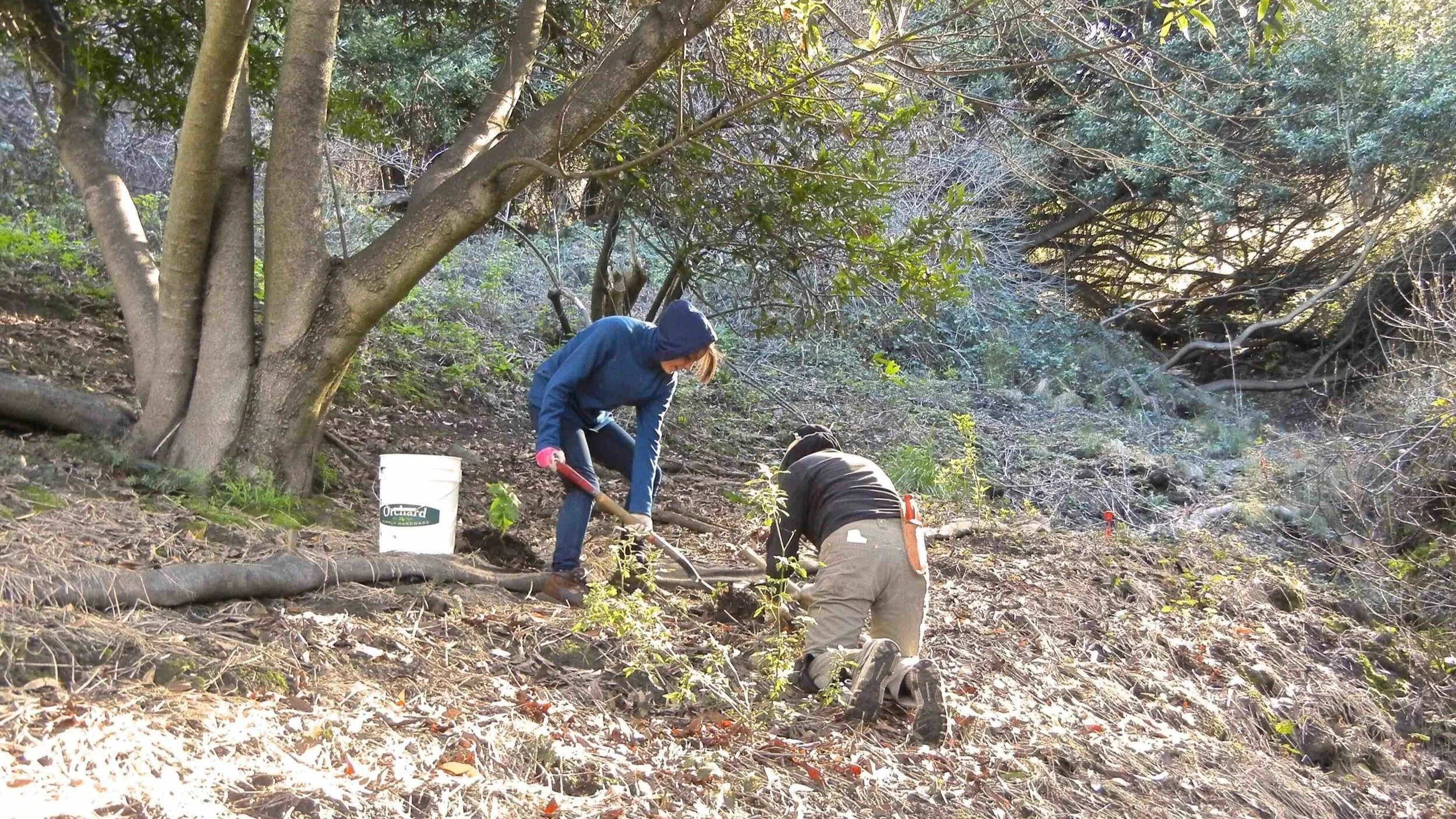Our president, Jon Kaufman sent a letter to Mr. Nauman of PG&E and advocated for more funding and strategic areas for undergrounding power lines to reduce the fire risk that can come with above ground lines.
Conservancy issues statement regarding appellate court ruling on UC Plan
Species identified on April 23, 2023 Bird Walk
In all, 16 species were identified, including a wild turkey in mid-flight. Nancy Mueller, host of the event, said, "It was a big thrill for me to see a turkey flying down Claremont Avenue. I had no idea they could fly."
Wrap up of Annual Meeting, Sunday, November 13, 2022, 4-6 PM, by Jon Kaufman
Vision 2042! by Nancy Mueller
Claremont Canyon Regional Preserve—Eucalyptus Removal is Underway by Marilyn Goldhaber
L. Tim Wallace, Rest in Peace
Evacuation on my mind, by Sue Piper, Chair Oakland Firesafe Council
Now, 30 years after the 1991 Firestorm and three years after the Camp Fire, which killed 85 people on the one road out of Paradise, evacuation is on many people’s minds. The problem, as I learned in 1991, is that in a crisis, you think with your gut. Oh, if we only had opportunities to practice evacuation many times over so that when the real threat appears, our minds know exactly what to do.
The Hermit Thrush, by Marilyn Goldhaber
The Hermit Thrush is a medium-small brownish bird with spotted breast, white eyering, and pink legs. Although it prefers a dense cover, it can be found in urban settings, especially on the border of forests. The bird pictured to the right was photographed in November by Erica Rutherford in her backyard at Hiller Highlands—the photograph then posted to Kay Loughman’s local wildlife gallery (nhwildlife.net).
The Chert Wall
The Claremont Chert, named after our own canyon, is a type of marine sedimentary rock. It consists of hard, fine-grained silica, plus more friable shales and mudstones from ancient siliceous skeletons of microscopic creatures. These tiny skeletons and other materials were deposited over millions of years in off-shore basins—when the shoreline of the California coast looked quite different from today.
The Aubry's Tree of Hope
We wanted you to know that the 1991 “Tree of Hope” was lit on Thanksgiving night in honor of all those who have perished from the virus. We will also light it from Dec. 1 to Jan. 1 to remember all the souls we have lost in California fires over the years. We want to especially thank our daughter, son in law and grandson (Janae, Lawrence & Christopher) who came over from Sacramento with their masks and managed to put the 1,000 lights on our “tree”.
Hero of Panoramic Hill
Bill McClung, local hero of our canyons
Variable checkerspot butterfly, by Kay Loughman
Rare sighting of a bobcat in Claremont Canyon, by Marilyn Goldhaber
Restoring the high ridge meadow areas above Claremont Canyon by Glen Schneider
Ecological restoration is the process of assisting the recovery of an ecosystem. The Skyline Gardens Alliance has been doing just that in the high ridge volcanic area between Tilden and Sibley regional parks. This is East Bay MUD watershed land, traversed north-south by the Skyline Trail. Under special permit from EBMUD, we are doing a botanical census …
Summer Tanager in Claremont Canyon, by Jon Colbert
To bird is to listen. And once you know the vocalizations of the local birds, an unusual bird stands out. That’s how Erica Rutherford and I discovered a summer tanager last fall in the Claremont Canyon Regional Preserve. Within minutes of stepping out of our car on the October 30, we heard “pit-ti-tuck,” a vocalization reminiscent of an expected (albeit out-of-season) species, the western tanager . . . but not quite. So, when we heard “pit-ti-tuck” again, we ran.
Managing a Changing Oak Woodland, by Shelagh Brodersen
Workshop attendees on the hillside planting native forbs and grasses after the removal of the old oak which had succumbed to “sudden oak death.”
THANKS TO EVERYONE who made January 12, 2019 such a fun and exciting start to this year’s restoration work in Garber Park. The recent removal of the old oak tree at the Evergreen Lane entrance, due to its earlier demise, gave way to a most timely, information-packed and fun workshop by Lech Naumovich. The workshop focused on the changing ecology of the Evergreen Hillside and was aptly named: Managing a Changing Oak Woodland: Oak Woodland Restoration Post-Climax.
The old oak came down on Thursday, January 10, the first sunny day after a week of down-pours, just in time for the weekend workshop. And what a fantastic workshop it was. From Lech: “ I estimate we planted over 100 plants (plugs, containers, cuttings plus we caged three coast live oak seedlings). What a great group and we got quite a bit of work done.”
May 6 bird walk—an ode to spring, by Kay Loughman
Especially with spring birding trips, our walk was as much about listening as seeing. We identified 29 species (see list below), many by sound alone. Resident singers, American Robins were among the first species we heard. Newly-arrived Swainson’s Thrushes announced their presence with single chips–they’ll be producing their spiraling ethereal song in another week or so. Then the “what peevesyou?” call of a distant Olive-sided Flycatcher let us know it too had completed its northward migration.
December 9, 2017 Bird Walk, by Kay Loughman
Last month's bird walk, led by Dave Quady and me, was a quiet affair—only fourteen species were observed over six hours of birding (minus 90 minutes for breakfast). That's an all time low for our winter bird walks, likely due to lack of rain (only one significant rainfall since spring) and strong dry winds the preceding week. Nevertheless our group of birders—four for the early morning owl walk and six for the after breakfast bird walk—enjoyed each others' company while we waited . . .


